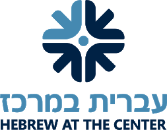Rock Creek Park Project Highlights Multi-Faceted Learning
January 28, 2016 by
Walking among towering trees, a fish-filled creek, and a brick-lined Peirce Mill, parents visiting JPDS-NC’s South Campus on January 21st could have thought they were taking a ramble through Rock Creek Park. Instead, they were appreciating first graders’ scaled model of the natural treasure that lies not a mile from our classroom doors, the culmination of their semester-long inquiry. What might have remained hidden from visitors, however, is how this work represented so much more than an artistic exercise. Rather, our exploration of Rock Creek Park immersed students in the fields of ecology, biology, history, social studies, literature, mathematics, evolution, the arts, and more.
Field trips to the Park expanded the walls of our classrooms out into our community and proved to be an integral piece of our research. While hiking on paths and scrambling over rocks, students engaged in scientific thinking: they collected water samples, measured air and water temperatures, and sketched their observations. Early in our studies, three large themes emerged from the children’s research: flora and fauna, history, and current problems facing the Park. Each of the first grade classes subsequently launched into an in-depth examination of one of these topics.
In the lead up to our Bayit Patuach (Open House) on the 21st, a visitor peeking into a first grade classroom might have found children forming hypotheses about animal adaptations and later translating their theories into clay models. Or a visitor might have seen children drawing blueprints of trees in the forest on graphing paper, using a 1:12 scale. Opening another door, the visitor might have overheard students discussing how to confront the contemporary problems facing Rock Creek Park, such as deer overpopulation and invasive plant species, and collaborating on workable solutions. In yet another room, children would have been industriously scrolling away on iPads to research the Civil War and Fort DeRussy, and later crafting “artifacts” of the era, including soldiers’ uniforms and cannons. In each room, a shelf of binders held students’ compiled research, field trip reflections, sketches, and creative writing. Buzzing with activity, the rooms themselves were brimming with vestiges of these efforts.
Uniting each stage of our project were two key themes: collaboration and drafting. Children worked closely with peers in small groups to gather information, share ideas, select materials, design plans, and construct tangible representations of their knowledge. Working alongside peers with differing perspectives strengthens more than our students’ burgeoning social-emotional skills. It also imbues them with the global competence skills that prognosticators believe will be key to success in the future marketplace. Similarly, drafting called on students to create multiple iterations of work, from copies of fables to sketches of indigenous animals. With each draft, children asked for specific, actionable feedback from peers and then integrated new ideas into their next iteration. Through this process, our learners internalized the lesson that excellence comes from slowing down, responding to critique, and trying again.
The outcome of Hadasim, Tainim, and Zaytim’s drafting and collaboration was on display on January 21st. Our pint-sized Rock Creek Park experts took their parents on a tour through their Park, and in so doing, revealed their meaningful and multi-faceted learning.






